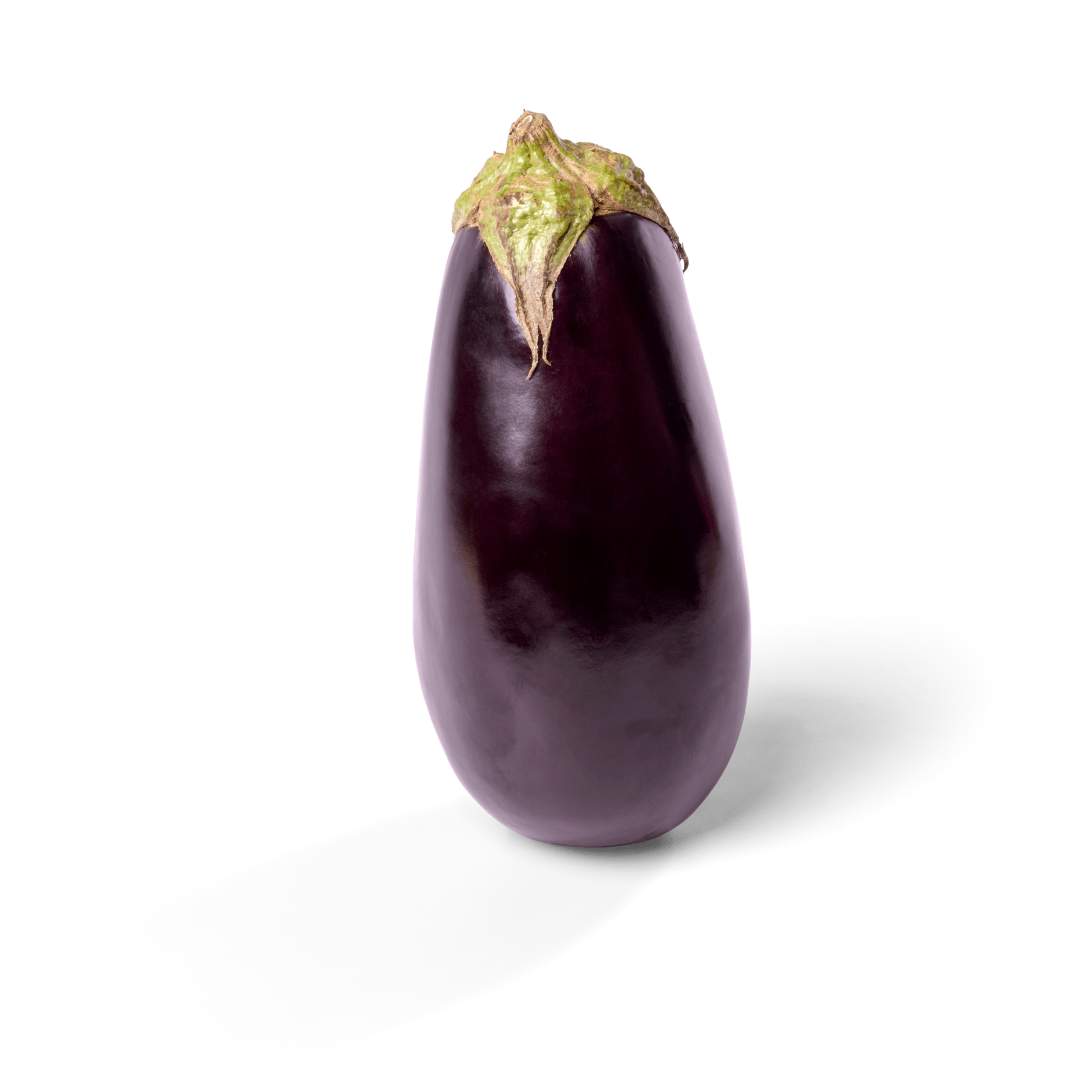About
Brinjal, also known as Eggplant or aubergine, is a nutritious vegetable that is commonly used in various cuisines around the world. It is a rich source of fiber, vitamins, minerals, and antioxidants, making it a healthy addition to any diet.
Health Benefits of Brinjal:
- Good for heart health: Brinjal is low in calories and contains fiber, potassium, and antioxidants that can help improve heart health.
- Helps with weight loss: Brinjal is low in calories and high in fiber, which can help promote weight loss.
- Good for digestion: The fiber in Brinjal can help promote healthy digestion and prevent constipation.
- Helps regulate blood sugar levels: Brinjal contains compounds that can help regulate blood sugar levels.
- Supports bone health: Brinjal contains minerals like calcium and magnesium, which are important for bone health.
Diseases that can be cured by Eggplant:
- High blood pressure: The potassium content in Brinjal can help lower blood pressure levels.
- Type 2 diabetes: The compounds in Brinjal can help regulate blood sugar levels and improve insulin sensitivity.
- Digestive problems: The fiber in Brinjal can help promote healthy digestion and prevent constipation.
Macronutrients per serving of 50 grams of Brinjal
| Nutrient | Amount |
|---|---|
| Carbohydrates | 2.1 g |
| Fats | 0.1 g |
| Proteins | 0.4 g |
| Fiber | 0.8 g |
| Water Content | 45 g |
Vitamins per serving of 50 grams of Brinjal
| Nutrient | Amount |
|---|---|
| Vitamin A | 2.5 mcg |
| Vitamin B1 (Thiamine) | 0.02 mg |
| Vitamin B2 (Riboflavin) | 0.02 mg |
| Vitamin B3 (Niacin) | 0.3 mg |
| Vitamin B6 | 0.05 mg |
| Vitamin B12 | 0 mcg |
| Vitamin C | 1.5 mg |
| Vitamin D | 0 mcg |
| Vitamin E | 0.2 mg |
| Vitamin K | 2.5 mcg |
| Folate | 9 mcg |
| Biotin | 0.1 mcg |
Minerals per serving of 50 grams of Brinjal
| Nutrient | Amount |
|---|---|
| Calcium | 7.5 mg |
| Iron | 0.2 mg |
| Iodine | 0 mcg |
| Zinc | 0.1 mg |
| Magnesium | 10 mg |
| Phosphorus | 14 mg |
| Potassium | 103 mg |
| Sodium | 0.5 mg |
| Chloride | 6.5 mg |
| Copper | 0.03 mg |
| Chromium | 0 mcg |
| Fluoride | 0 mcg |
| Molybdenum | 0.5 mcg |
| Manganese | 0.1 mg |
| Selenium | 0.1 mcg |
What are the health benefits of Brinjal?
Brinjal is rich in fiber, antioxidants, and vitamins, which can promote digestion, heart health, and support overall well-being.
Where can I buy fresh Brinjal?
Fresh Brinjals can be found in local grocery stores, farmers' markets, or even grown in a home garden.
Are there different types of Brinjal?
Yes, Brinjal comes in various shapes, sizes, and colors, including the classic purple variety as well as white, green, or striped varieties.
What are some popular Brinjal dishes?
Popular Brinjal dishes include Baingan Bharta, Ratatouille, Moussaka, Parmigiana, and stuffed Brinjal recipes.
Can Brinjal help with weight loss?
Brinjal is low in calories and high in fiber, making it a suitable choice for weight management and maintaining a healthy diet.
How can I grow Brinjal in a home garden?
Brinjal can be grown in a sunny spot with well-drained soil, regular watering, and protection from pests.
Can Brinjal be grilled?
Yes, grilling Brinjal imparts a smoky flavor and tender texture, which works well in various dishes or as a standalone side dish.
How can I incorporate Brinjal into a balanced diet?
Brinjal can be used in curries, stir-fries, salads, or even as a meat substitute in vegetarian or vegan dishes, offering a nutritious addition to meals.
Are there any unique Brinjal varieties?
Yes, there are unique Brinjal varieties like Thai eggplant, Japanese eggplant, and long purple eggplant, each with their own flavors and culinary uses.
What are the nutritional values of Brinjal?
Brinjal is low in calories and a good source of dietary fiber, potassium, and antioxidants, providing essential nutrients for a healthy diet.
How can I select the best Brinjal at the grocery store?
Choose Brinjals that are firm, shiny, and without blemishes. Avoid Brinjals with soft spots or wrinkled skin.
What are the differences between Brinjal and Eggplant?
Brinjal and Eggplant are different names for the same vegetable, known for its glossy purple skin and creamy flesh.
Can Brinjal be used in curries?
Absolutely! Brinjal is commonly used in curries and offers a rich, creamy texture that absorbs the flavors of spices and seasonings.
How should I store Brinjal to maintain its freshness?
Store Brinjals in a cool, dry place or in the refrigerator's crisper drawer to keep them fresh for up to a week.
Are there any Brinjal allergies or sensitivities?
While Brinjal allergies are rare, some individuals may be sensitive to Solanine, a naturally occurring compound found in Brinjals.
What are the culinary uses of Brinjal in different cuisines?
Brinjal is used in various cuisines, including Indian, Mediterranean, Middle Eastern, and Asian cuisines, in curries, stews, dips, and side dishes.
How can I make Brinjal fries?
Slice Brinjal into thin strips, coat them with a batter or breadcrumb mixture and fry them until golden and crispy for delicious Brinjal fries.
Can Brinjal be used in pickles?
Yes, Brinjal can be used in pickles, either as the main ingredient or alongside other vegetables, to create tangy and flavorful preserves.









